In 1926 there was the first ever national Negro History Week on the second week of Feburary, perfectly overlappng with the birthdays of Abraham Lincoln and Frederick Douglass. Negro Week was sponsored by the Association for the Study of Negro Life and History (ASNLH) that was an organization started by Harvard-trained historian Carter G. Woodson and Jesse E. Moorland, a prominent minister. Over time Negro Week evolved into the Black History Month we have today. This February, the League of Women Voters Berkeley, Albany, Emeryville Diversity Equity and Inclusion (DEI) Team is highlighting five important figures in modern African-American history, some of whom you may know about, but nevertheless, should be celebrated this month.
Medgar Evers
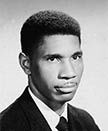 Evers was born in Decatur, Mississippi 1925 and fought to defeat fascism and Nazism in Europe during WWII. After serving in the army, Evers graduated from Alcorn Agricultural and Mechanical College (now Alcorn State University) and later got a job in insurance sales. Evers became an activist against racial authoritarianism in the United States after he and five of his friends were threatened at gunpoint when trying to exercise their right to vote in a local election. This and other dehumanizing experiences led him and his brother to become increasingly involved with the National Association for the Advancement of Colored People (NAACP). The Evers family started organizing quietly and slowly at first, but later Medgar moved to Jackson to become the NAACP’s first field secretary in Mississippi. He wholeheartedly dedicated himself to the NAACP and desegregation by recruiting members, organizing boycotts, voter registration drives and more. At the height of the Civil Rights Movement in the 1960s, the tensions and threat of racist terrorism in Mississippi rose to a dangerous high and on June 12, 1963, Evers was shot and killed in front of his home, only a few hours after President John F. Kennedy made an inspirational speech about Civil Rights. Evers, who until his assassination was a relatively lesser known figure outside of Mississippi, became a nationally known hero. Evers was buried with full military honors in the Arlington National Cemetery and awarded the 1963 Spingarn Medal of the NAACP where he was laid to rest.
Evers was born in Decatur, Mississippi 1925 and fought to defeat fascism and Nazism in Europe during WWII. After serving in the army, Evers graduated from Alcorn Agricultural and Mechanical College (now Alcorn State University) and later got a job in insurance sales. Evers became an activist against racial authoritarianism in the United States after he and five of his friends were threatened at gunpoint when trying to exercise their right to vote in a local election. This and other dehumanizing experiences led him and his brother to become increasingly involved with the National Association for the Advancement of Colored People (NAACP). The Evers family started organizing quietly and slowly at first, but later Medgar moved to Jackson to become the NAACP’s first field secretary in Mississippi. He wholeheartedly dedicated himself to the NAACP and desegregation by recruiting members, organizing boycotts, voter registration drives and more. At the height of the Civil Rights Movement in the 1960s, the tensions and threat of racist terrorism in Mississippi rose to a dangerous high and on June 12, 1963, Evers was shot and killed in front of his home, only a few hours after President John F. Kennedy made an inspirational speech about Civil Rights. Evers, who until his assassination was a relatively lesser known figure outside of Mississippi, became a nationally known hero. Evers was buried with full military honors in the Arlington National Cemetery and awarded the 1963 Spingarn Medal of the NAACP where he was laid to rest.
Marie Maynard Daly
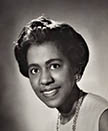 Daly born in Queens 1921 had a love for science from a young age. She went to Queens College and graduated with a bachelor’s degree in chemistry in 1942 and later got her PhD in chemistry from Columbia University. Daly was the first African American woman to receive a PhD in chemistry in America. Daly then worked as a professor at Howard University for two years. Daly later received a grant to work on her postdoctoral research on cell nucleuses along with Alfred E. Mirsky, prominent molecular biologist, at the Rockefeller Institute in New York. For the rest of her academic career, Daly was a professor at Columbia university and Albert Einstein College of Medicine. Daly’s research on cholesterol, sugars and proteins is still important to this day.
Daly born in Queens 1921 had a love for science from a young age. She went to Queens College and graduated with a bachelor’s degree in chemistry in 1942 and later got her PhD in chemistry from Columbia University. Daly was the first African American woman to receive a PhD in chemistry in America. Daly then worked as a professor at Howard University for two years. Daly later received a grant to work on her postdoctoral research on cell nucleuses along with Alfred E. Mirsky, prominent molecular biologist, at the Rockefeller Institute in New York. For the rest of her academic career, Daly was a professor at Columbia university and Albert Einstein College of Medicine. Daly’s research on cholesterol, sugars and proteins is still important to this day.
Norman Wilfred Lewis
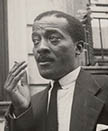 Lewis was born in Harlem in a predominantly Italian and Jewish neighborhood, which opened his eyes to racial inequities at a young age. Lewis began his career in the 1930’s in Social Realism, an art movement depicting the harsh realities of the working class. In the 1950’s he started painting images of bread lines, evictions, and police brutality. He began to believe Social Realism was not an effective movement to counter racism. Lewis was an important member of the Abstract Expressionism Movement which aimed at making abstract art which was also expressive. Lewis’s art was known for its distinct characteristics, such as his works’ focus on duality of abstraction and representation, as well as his use of geometric and natural shapes,calligraphic lines and bright colors.
Lewis was born in Harlem in a predominantly Italian and Jewish neighborhood, which opened his eyes to racial inequities at a young age. Lewis began his career in the 1930’s in Social Realism, an art movement depicting the harsh realities of the working class. In the 1950’s he started painting images of bread lines, evictions, and police brutality. He began to believe Social Realism was not an effective movement to counter racism. Lewis was an important member of the Abstract Expressionism Movement which aimed at making abstract art which was also expressive. Lewis’s art was known for its distinct characteristics, such as his works’ focus on duality of abstraction and representation, as well as his use of geometric and natural shapes,calligraphic lines and bright colors.
Mae Jemison
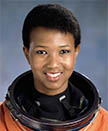 Jemison born in 1956 in Decatur, Alabama graduated high school at 16 and entered Stanford University where she received degrees in chemical engineering and African American studies. Jemison then attended Cornell University Medical School and volunteered in a Cambodian refugee camp in Thailand. She also studied abroad in Kenya. Jemison later joined the Peace Corps and served in West Africa until she returned to the US where she applied to become a NASA astronaut. Being 1 of 15 accepted out of 2,000 applicants, Jeminson completed her astronaut training at NASA. Jeminson’s first maiden space flight was with the Endeavour shuttle in 1992, making her the first black woman in space. After leaving NASA she formed the Jemison Group to develop and sell advanced technology.
Jemison born in 1956 in Decatur, Alabama graduated high school at 16 and entered Stanford University where she received degrees in chemical engineering and African American studies. Jemison then attended Cornell University Medical School and volunteered in a Cambodian refugee camp in Thailand. She also studied abroad in Kenya. Jemison later joined the Peace Corps and served in West Africa until she returned to the US where she applied to become a NASA astronaut. Being 1 of 15 accepted out of 2,000 applicants, Jeminson completed her astronaut training at NASA. Jeminson’s first maiden space flight was with the Endeavour shuttle in 1992, making her the first black woman in space. After leaving NASA she formed the Jemison Group to develop and sell advanced technology.
Audre Lorde
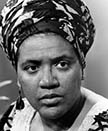 Born in 1934, Lorde is remembered for her powerful works on racism, social injustice, and lesbian feminism. She attended Hunter College in New York City where she received a BA and a Master’s Degree in Library Science, before becoming a professor in the English Department. Lorde married in 1962 and started writing poetry while working as a librarian. Her first volume of poetry, The First Cities, was published in 1968. The volume Lorde released in 1970 Cables to Rage touched heavily on her anger at the injustices in the world. However her next volumes From a Land Where Other People Live and New York Head Shop and Museum grappled with political matters.
Born in 1934, Lorde is remembered for her powerful works on racism, social injustice, and lesbian feminism. She attended Hunter College in New York City where she received a BA and a Master’s Degree in Library Science, before becoming a professor in the English Department. Lorde married in 1962 and started writing poetry while working as a librarian. Her first volume of poetry, The First Cities, was published in 1968. The volume Lorde released in 1970 Cables to Rage touched heavily on her anger at the injustices in the world. However her next volumes From a Land Where Other People Live and New York Head Shop and Museum grappled with political matters.
Lorde really started to get more notice in 1976 when a major publisher released a compilation of her writings titled Coal and later The Black Unicorn in 1978, which many people consider to be her best work. In a later volume, The Cancer Journal, Lorde shared her 14-year battle with cancer which she also mentioned in her volume A Burst of Light, which won a National Book Award in 1988. Lorde also opened up a publishing house with activist Barbara Smith called Kitchen Table: Women of Color Press. Lorde published many other works including a novel titled Zami: A New Spelling of My Name about a mother and daughter relationship. As an early writer about intersectionality, Lorde’s insightful essays and powerful poetry continue to inspire.
–Yuval Magidash
https://www.history.com/topics/black-history/black-history-month
https://www.britannica.com/biography/Medgar-Evers
https://www.sciencehistory.org/education/scientific-biographies/marie-maynard-daly/
https://www.theartstory.org/artist/lewis-norman/
https://www.britannica.com/biography/Mae-Jemison
https://www.britannica.com/biography/Audre-Lorde
All League News

